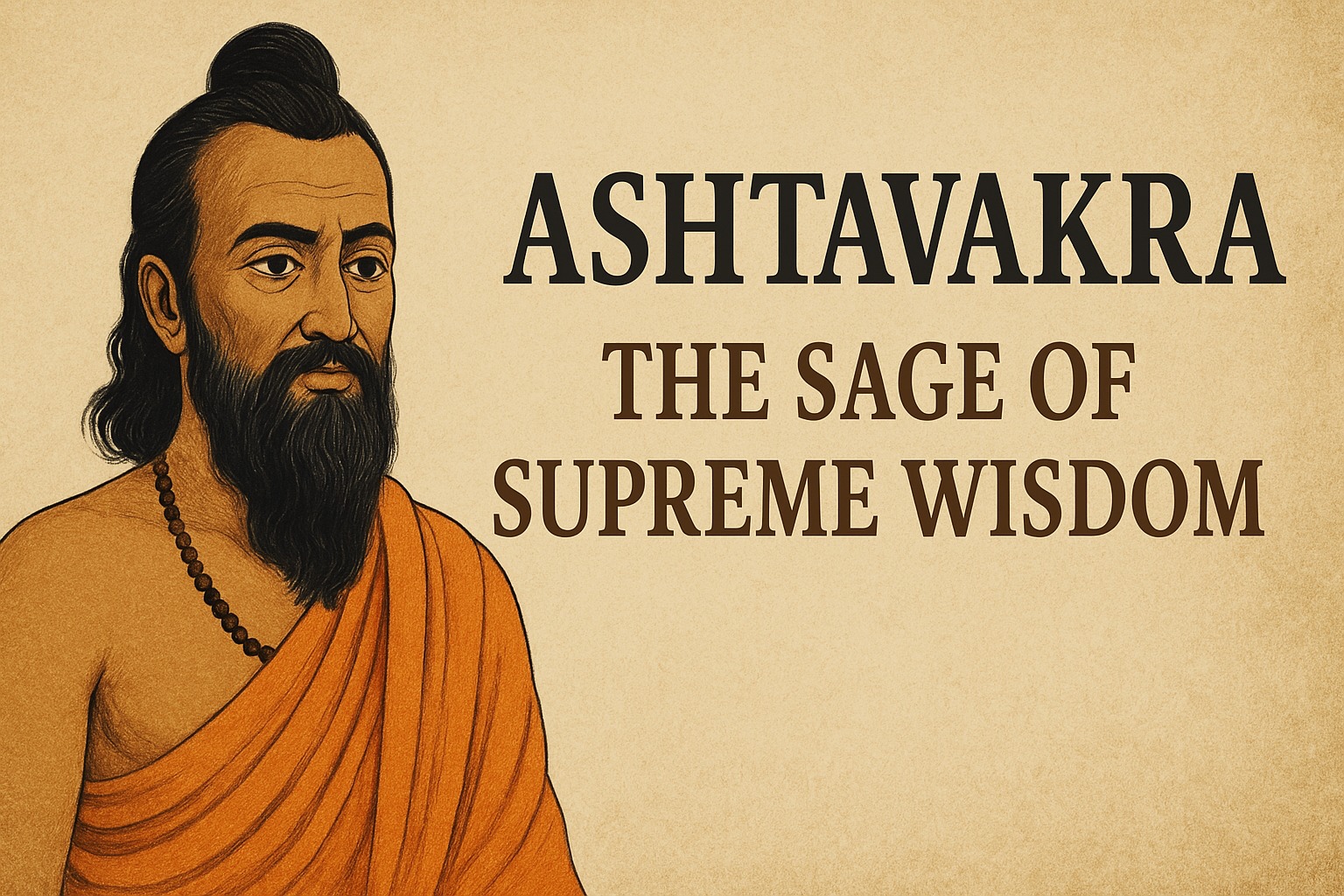Ashtavakra: The Sage of Supreme Wisdom
Ashtavakra is one of the most profound sages in Indian spiritual history. Renowned for his wisdom and non-dualistic (Advaita) teachings, he is best known for the Ashtavakra Gita, a timeless dialogue on self-realization and liberation.

Ashtavakra is one of the most profound sages in Indian spiritual history. Renowned for his wisdom and non-dualistic (Advaita) teachings, he is best known for the Ashtavakra Gita, a timeless dialogue on self-realization and liberation. Despite his physical deformities, his intellect and spiritual insight made him a revered teacher, even among kings and scholars.
Early Life and Birth
According to legend, Ashtavakra was born with eight deformities (Ashta = eight, Vakra = bent or crooked). His father, the sage Kahoda, was a scholar who recited Vedic mantras while his wife, Sujata, was pregnant. However, the unborn Ashtavakra corrected his father’s recitations from the womb, angering Kahoda, who cursed him to be born deformed.
This unusual beginning did not deter Ashtavakra’s spiritual destiny. He displayed exceptional wisdom from a young age and set out on a journey that would lead him to unparalleled self-realization.
Ashtavakra and King Janaka
One of the most famous episodes in Ashtavakra’s life is his encounter with King Janaka, a great philosopher-king and father of Goddess Sita. Seeking the highest wisdom, Janaka invited many scholars to debate in his court. Young Ashtavakra, though ridiculed for his appearance, stunned the court with his profound insights.
When asked about true knowledge, Ashtavakra asserted:
"You are not the body, nor the mind. You are the eternal Self, untouched by birth or death."
His teachings deeply influenced King Janaka, leading to an enlightening dialogue now known as the Ashtavakra Gita, a masterpiece of Advaita Vedanta.
Key Teachings of Ashtavakra
The Ashtavakra Gita is a direct and uncompromising guide to enlightenment. Its main principles include:
- Non-Duality (Advaita Vedanta) – There is no difference between the self (Atman) and the absolute reality (Brahman).
- Liberation Through Knowledge – True freedom comes not from rituals or renunciation, but from realizing one’s eternal nature.
- Detachment from the World – The world is an illusion (Maya). Attachments and desires keep us bound.
- Beyond Good and Evil – The enlightened being transcends morality and dualistic concepts of right and wrong.
- Effortless Enlightenment – Liberation is not a distant goal but an ever-present reality. It only requires recognizing one's true self.
The Legacy of Ashtavakra
Unlike many spiritual texts that advocate gradual practice and discipline, the Ashtavakra Gita offers an instant realization of truth. It is often compared to the Bhagavad Gita but is considered even more radical in its approach.
Ashtavakra’s teachings remain relevant for those seeking self-inquiry and direct enlightenment, free from dogma or elaborate practices.
Conclusion
Ashtavakra's life is a testament to the power of wisdom over physical limitations. His teachings cut through the illusions of the world and offer direct insight into the nature of the self. For spiritual seekers, the Ashtavakra Gita remains one of the most profound texts, guiding them toward ultimate freedom and inner peace.